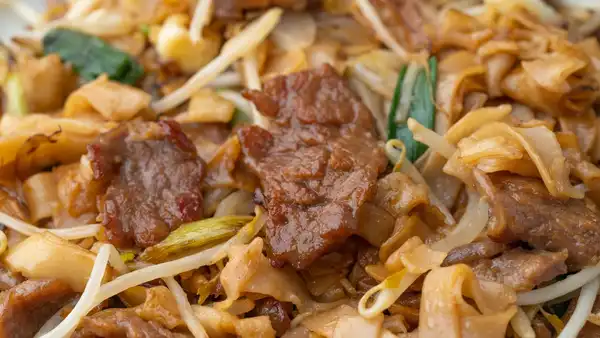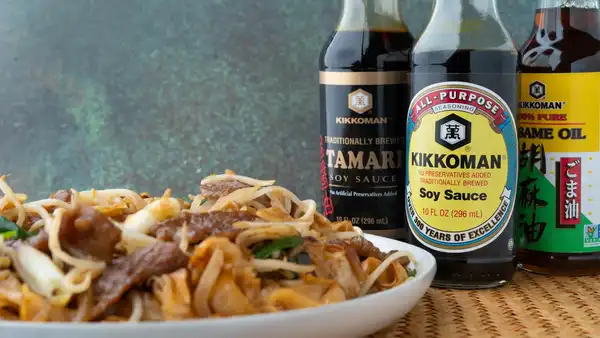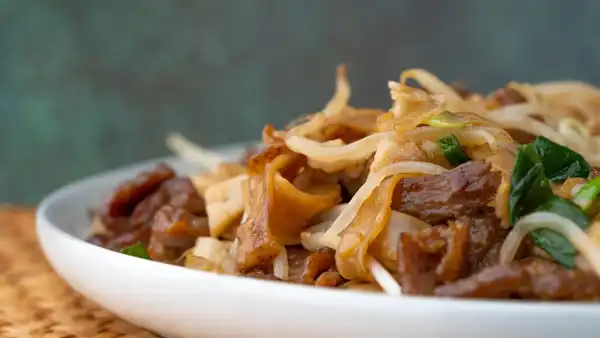Beef Chow Fun, also known as Chow Hor Fun, gets its name from the town of Shahe in Guangzhou, where this distinctive style of flat rice noodles was first created.
The Cantonese name for the dish is 乾炒牛河. 乾 gon1 meaning "dry," 炒 caau2 meaning "stir-fry," 牛 ngau4 meaning "beef," and 河 ho4*2 meaning "flat rice noodles." "Dry" indicates that this is not a very saucy dish, so you shouldn't see a big puddle of sauce pooling at the bottom. (There’s a saucier version, too!)
As more Chinese people started coming to America in the 40s and 50s, over two-thirds of them were Guangdong Yan (like my mom and dad). Up until the 60s and 70s, Chinese food in America was primarily Cantonese cuisine.
That’s why, today, Cantonese dishes like chow fun and chow mein are still among the most popular dishes across over 40,000 Chinese restaurants in America.
Making restaurant-quality beef chow fun at home
Restaurant-level smokiness and wok hei may be hard to achieve, but my dad will show you how you can still nail that flavor and texture at home.
Since it's unlikely that you have jet-level burners at home (or do you?), the noodles will have to cook for a little longer than they would in a restaurant. Be patient and let them get toasty before you agitate or stir them.
Thank you, Kikkoman!
This recipe is brought to you in part by Kikkoman. My dad has been using Kikkoman flavors throughout his 50-year career as a chef, and it's a privilege to get to partner with them on such an iconic recipe, beef chow fun!
- Kikkoman products are a major flavor enhancer and bring out the “umami” taste, and helps balance and round out flavors
- Kikkoman® Less Sodium Soy Sauce is perfect for home cooks who are looking to cut down on their sodium levels, without sacrificing flavor
- Kikkoman offers wide range of Gluten-Free Asian sauces, including Gluten-Free Oyster Sauce and Gluten-Free Hoisin Sauce
- The KikkomanUSA.com Chinese site offers easy Asian recipes that home cooks can enjoy any night of the week
You can learn more about Kikkoman and follow them on social media here:
- Website: https://www.KikkomanUSA.com
- Facebook: https://www.facebook.com/KikkomanChineseUSA (Kikkoman 萬字在美)
- Instagram: https://www.instagram.com/kikkomanusa_chinese/ (Kikkoman 萬字在美)
Check out a quick story summary of our recipe!



